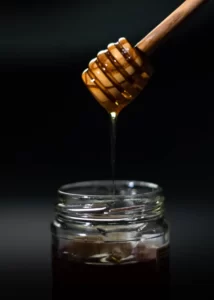Table of Contents
Manuka honey has been gaining recognition for its potential benefits in wound healing, especially in the context of surgical wounds. Surgical wounds can be a result of injuries caused by surgery or accidents, leading to tissue destruction, disruption of blood vessels, and hypoxia. The healing process of wounds involves a complex series of events, including inflammation, proliferation, and tissue remodeling.
The Importance of Wound Healing
Wound healing is of utmost importance, considering the significant number of people affected by burns and chronic skin ulcers each year. Chronic skin ulcers, caused by pressure, venous stasis, or diabetes mellitus, affect approximately 6.5 million people in the United States alone. Moreover, diabetes represents a major obstacle to proper wound healing, with over 150 million people worldwide suffering from this condition in 2004, a number projected to double by 2025.
Understanding the Pathophysiology of Wound Healing
To comprehend the potential benefits of manuka honey in wound healing, it is crucial to understand the underlying pathophysiology of this process. A wound is essentially a disruption of tissue structure, which triggers a cascade of events. The initial injury leads to tissue destruction, blood vessel disruption, and the release of blood constituents, resulting in hypoxia.
The wound healing process consists of three phases: inflammation, proliferation, and tissue remodeling. Cytokines, growth factors, blood and cellular elements, and the extracellular matrix play critical roles in promoting wound healing. Cytokines, for example, stimulate the production of basement membrane components, prevent dehydration, and increase inflammation and granulation tissue formation.
At the cellular level, monocytes infiltrate the wound site and transform into activated macrophages. These macrophages release growth factors like platelet-derived growth factor (PDGF) and vascular endothelial growth factor (VEGF), initiating the formation of granulation tissue. Macrophages are essential for inflammation and repair, as evidenced by the impaired wound healing observed in macrophage-depleted animals. In fact, transfusion of macrophages has been shown to accelerate wound healing in patients with nonhealing wounds.
Platelets also play a crucial role in wound healing by facilitating the formation of a hemostatic plug and secreting PDGF, which attracts and activates macrophages and fibroblasts. Re-epithelialization, the process of new skin growth, begins shortly after injury, with epidermal cells at the wound margin proliferating within one to two days. Simultaneously, new granulation tissue invades the wound gap, and new capillaries grow through the granular stroma. Fibroblasts migrate into the wound and synthesize the extracellular matrix, further promoting the healing process.
The Role of Angiogenesis and Wound Contraction
Angiogenesis, the formation of new blood vessels from an existing network, is crucial for wound healing. Initially, acidic or basic fibroblast growth factors released from macrophages were attributed to inducing angiogenesis. However, once the wound is filled with granulation tissue, angiogenesis ceases, and some of the new blood vessels undergo apoptosis.
Wound contraction, on the other hand, involves a complex interaction between cells, the extracellular matrix, and cytokines. The process of wound contraction is not significantly influenced by prostaglandins or their precursors, despite their role in inflammation and smooth-muscle stimulation.
Essential Nutrients for Wound Healing
Various nutrients play a vital role in wound healing, including vitamins C, E, and A, glucose, amino acids, antioxidants, fatty acids, proteins, water, and zinc. For example, ascorbic acid (vitamin C) has been shown to protect against radiation-induced sickness and mortality and improve wound healing after exposure to gamma radiation. Low levels of antioxidants, coupled with elevated markers of free radical damage, contribute to delayed wound healing, as observed in diabetic rats. Additionally, hydrogen peroxide and an acidic environment have been found to promote tissue growth and wound contraction.
Approaches to Wound Care
Conservative methods of wound care, including the use of standard wound dressings, management of underlying problems like hyperglycemia, debridement of dead tissue, restoration of tissue perfusion, pressure limitation, and infection control, are successful in the majority of patients with acute or chronic skin wounds. However, large and life-threatening skin wounds may necessitate more advanced interventions, such as the use of cultured, autologous, epidermal-cell grafts or biologic skin substitutes.
In recent years, manuka honey has gained attention for its potential role in promoting wound healing, particularly in surgical wounds. Numerous studies have explored the antimicrobial, anti-inflammatory, and tissue-regenerating properties of manuka honey, making it a promising candidate for wound care. In the next sections, we will delve into the potential benefits of manuka honey for surgical wounds and the scientific evidence supporting its use.



